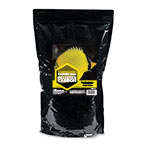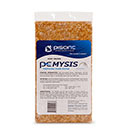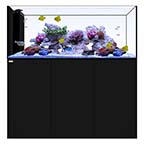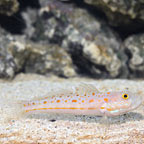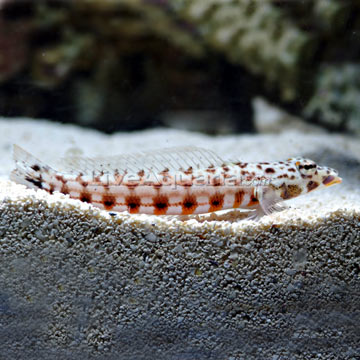
Additional locales and sizes may be available!
Additional locales and sizes may be available! Email me when availableQuick Stats
What do these Quick Stats mean? Click here for more information
What do these Quick Stats mean? Click here for more information
Overview
The Sandhopper Blenny, also known as the Red Stripe Sand Perch, originates within the rubble zones of the reefs in the Indo-Pacific. They have an elongated body that is vertically striped in alternating red and white. The head is accentuated by large eyes, which are black in color. These fish are very hardy and do not require a large aquarium.
A well-established 30-gallon or larger aquarium with plenty of live rock is a suitable environment. It is not usually aggressive, unless the tank mates appear to have a similar shape as it does. It is best to house singly unless kept in a larger aquarium and the two are a mated pair. The Sandhopper Blenny is a great jumper, making a tight fitting canopy a must.
The Sandhopper Blenny does best in an aquarium with large amounts of mature live rock that it can graze upon. The diet should consist of meaty items including vitamin enriched brine and mysis shrimp, chopped fresh seafood, and a quality flake food.
Approximate Purchase Size: Small;1" to 2" Medium; 2" - 3" Large; 3" - 4"




